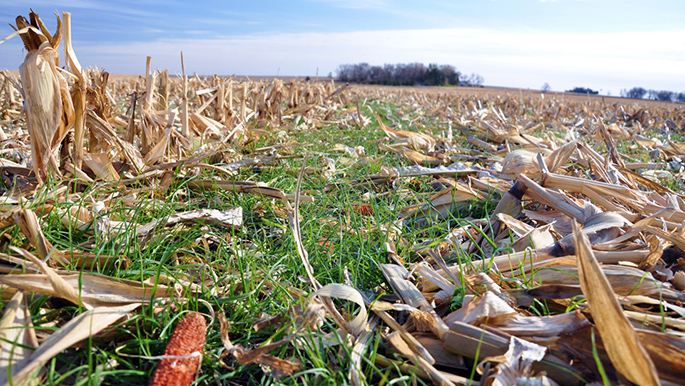Last month, the Illinois Department of Agriculture opened applications for its second annual Fall Covers for Spring Savings Program — which provides a crop insurance discount for each acre of cover crop a farmer plants.
It filled up in less than 24 hours.
“It’s just really amazing that the 50,000 acres sold out on day one and that there was this huge demand of close to 200,000 acres by the end of the sign-up period,” says Kris Reynolds, Midwest Director of the American Farmland Trust, which helped get the program up and running in Illinois two years ago.
Cover crops provide a myriad of benefits — from protecting surrounding waterways to improving soil health and preventing weeds. And the first year of Illinois’ cover crop program kept the carbon equivalent of 5,000 cars off the road and 4,000 truckloads of sediment out of waterways, according to Liz Moran Stelk, executive director of the Illinois Stewardship Alliance.
But many farmers are reluctant to plant cover crops due to the additional planning and labor.
“There’s no doubt that a conservation cropping system, including cover crops and no-till, is going to require a little more management than just going out and doing tillage to prepare the soil,” Reynolds says.
However, he says, it’s ultimately worth it.
“We want farmers to not think of cover crops as something they may have an issue with when they take out crop insurance, but rather how cover crops can actually make their cropland more resilient and hopefully lead to less crop insurance claims,” he says.
Currently, only 3-6% of Illinois’ cropland utilizes cover crops. But farmers’ interest in the program has skyrocketed since its launch two years ago. So much so that the program can’t keep up.
This year, the Illinois Department of Agriculture allotted funding to compensate up to 50,000 acres. With 768 applications submitted, 185,000 acres were requested. Applicants are awarded on a first-come, first-served basis.
Reynold says it’s time to figure out how to ramp up the program.
“If a farmer has applied the last two years and hasn’t been able to get into the program, then how is that going to actually influence him to plant more cover crop acres in the future?” he says.
Iowa could serve as a model. The state just closed applications for the fourth year of its crop insurance program, which also provides crop insurance discounts per acres of cover crops planted. To date, about 1,700 farmers have benefited from the program, and almost 500,000 acres of cover crops have been planted in Iowa.
Iowa also has more money allocated to the program than Illinois, with enough to cover up to 200,000 acres per year. Reynolds says he hopes Illinois’ Department of Agriculture sets more money aside for cover crop programs in the future, despite the challenging budget situation.
Other Midwestern states are also hoping to adopt similar programs, including Indiana, Wisconsin and Minnesota. Reynolds says he’s also in talks with federal agencies about how to expand the program nationwide.
“I think there’s a lot of potential for it over the next several years,” he says. “As we look at some of the statements that President Biden has made about combating climate change and actually referring to the use of cover crops as one of the practices that can help us.”
Follow Dana on Twitter: @DanaHCronin

